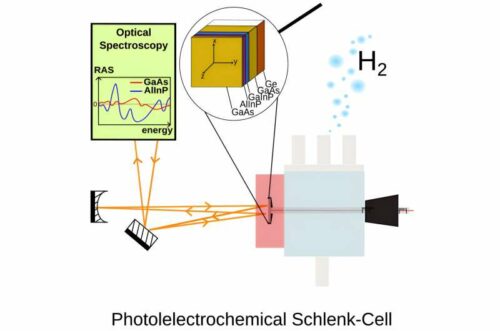Researchers from the University of Tübingen introduced a high-efficiency solar cell designed to produce “green hydrogen” from sunlight, offering a more streamlined and cost-effective solution, opening doors to decentralized energy solutions and significantly reducing carbon emissions.

Researchers globally are on a quest to develop efficient methods for hydrogen production as it promises a reduction in fossil fuel dependency, especially when derived from renewable energy sources. The existing techniques to produce eco-friendly hydrogen are either too inefficient or pricey for large-scale adoption.
At the University of Tübingen, researchers have unveiled a unique solar cell with a high-efficiency level. This solar cell can produce hydrogen on a decentralized scale, showing potential for large-scale deployments. Their findings are documented in the journal Cell Reports Physical Science. The hydrogen production process from water using renewable energy is termed “green hydrogen” due to its sustainable nature. This method, often likened to artificial photosynthesis, utilizes sunlight to generate hydrogen.
The research team has introduced a solar cell that seamlessly integrates into the photoelectrochemical setup. It collaboratively operates with the catalysts responsible for water splitting. Unlike traditional setups that require an external circuit, this eliminates that need, making the technology more streamlined, adaptable, and potentially more cost-effective. A feature of this solar cell is its meticulous control over the interfaces between various materials, maintained at nano-scale precision. Tiny crystalline defects emerging during solar cell layer formation pose challenges as they can compromise system efficiency and stability.
The team acknowledges the need to improve the solar cell’s corrosion resistance for enhanced durability. Their innovative design has attained an 18% efficiency in direct solar water splitting, ranking it second in the global records. Historical benchmarks set by the National Renewable Energy Laboratory (NREL) in the U.S. saw efficiencies of 12% in 1998, 14% in 2015, and a leap to 19% in 2018. While other academic efforts have shown that even lower efficiencies can be viable for commercial applications, the researchers point out their technology’s uniqueness in enabling solar hydrogen production without relying heavily on the power grid. This paves the way for decentralized energy solutions.
The team’s future roadmap involves enhancing durability, transitioning to more affordable silicon-based materials, and enlarging the operational surface area. These advancements could potentially revolutionize the energy sector, driving down carbon emissions.






